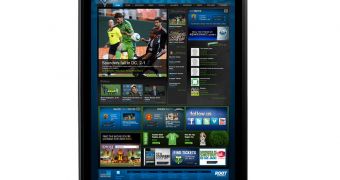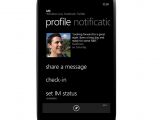Mango, the latest flavor of Windows Phone, Microsoft's own mobile operating system, is finally official, with a great deal of new features included into the mix, and with brand new experience in store for all of its users.
Most of the features the new platform release would arrive on devices with have been already unveiled to the world, both through unofficial channels, as well as officially, though ahead of the expected moment.
Microsoft promises hundreds of new features in Mango, but only some of them were detailed, and we already covered most of them.
However, there still are some of these enhancements that slipped through, and we feel that we should take a look at them as well, so as to make a better idea of what the next Windows Phone release would arrive with.
For starters, we should note that Mango would hit shelves with hardware-accelerated graphics into the mix, along with a new real-time augmented reality view, and with new motion and camera APIs, all of which should open the door to new software and new ways of looking at the world around.
The new mobile OS flavor would also come with support for a load of new languages, and with better means to find what one is looking for, including information, music, videos and the like.
The manner in which applications are handled on handsets was improved as well, through App Connect, which should connect software to search, or to Windows Phone Hubs, so that users would have access to them whenever they need.
“Mango builds on the work that we did in Windows Phone 7 and extends a lot of key scenarios around communications, apps, and Internet experiences – with even more capability and a deeper level of integration,” Greg Sullivan, senior product manager of mobile communications at Microsoft, explains.
“It’s like having a great butler or a valet that you've known for 30 years who can anticipate your every need instead you doing all the work yourself.
“Windows Phone stitches all of this together for you and connects the applications you have on your phone, or that we have in the marketplace, to the rest of what you're doing, in a way that's much, much deeper than any other platform. So you can go from Binging to buying in seconds.”
Mango would include Bing search by photographing barcodes, QR codes and Microsoft Tags, as well as music search, which would deliver info like song title, artist and album title through simply pointing the phone up to a speaker.
Enhancements were brought to the manner in which users are connected with their friends as well, regardless whether they know a person through Facebook, Twitter, Outlook, LinkedIn, Windows Live Messenger, or all of them.
When sending a message to someone, Mango would detect whether the person is connected to any of the above, and would provide the option to send a specific message, or a text message.
Contacts would be grouped based on the manner in which they fit in users' lives. This would enable group texts or IM conversations, simplifying the communication experience of Windows Phone users.
Moreover, users would enjoy increased customization features on their devices, through Personalized Live Tiles, and the possibility to have multiple email accounts loaded on the device. Built-in voice-to-text/text-to-voice functionality was also added to Mango.
All these, along with what was detailed on the Windows Phone Mango platform release before, should make it to devices in early fall, Microsoft announced. The update would be delivered for free to existing handsets as well.

 14 DAY TRIAL //
14 DAY TRIAL // 

